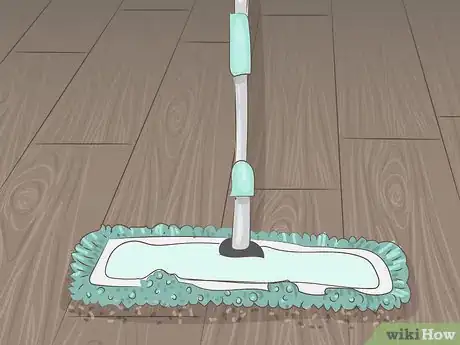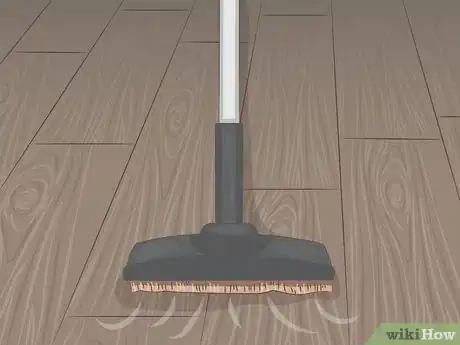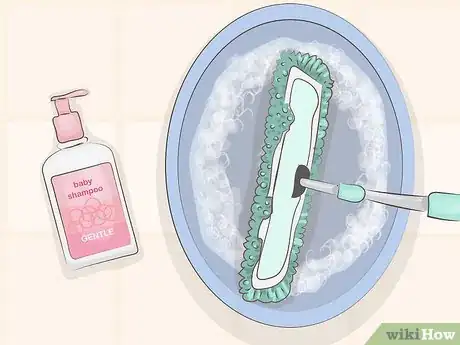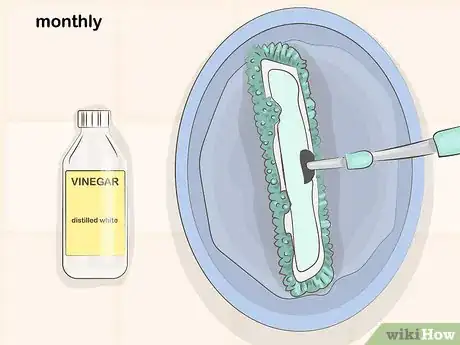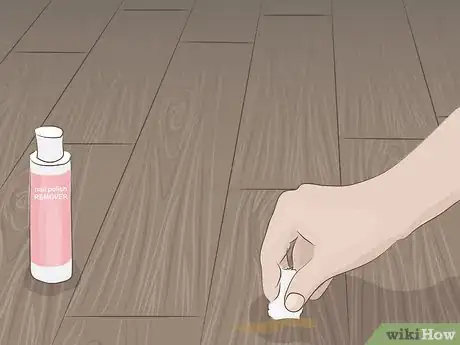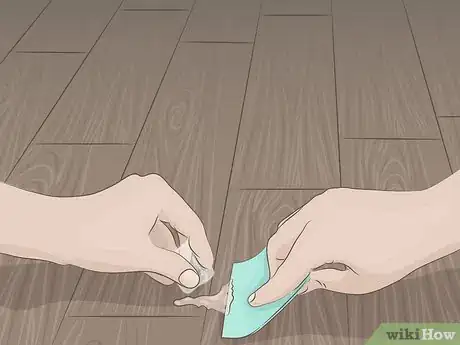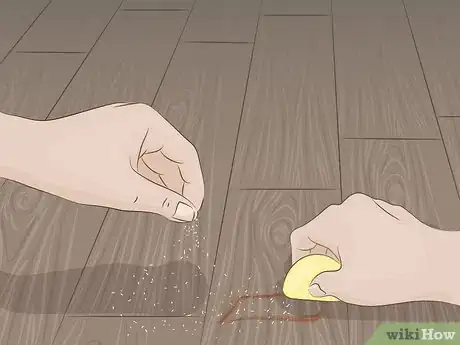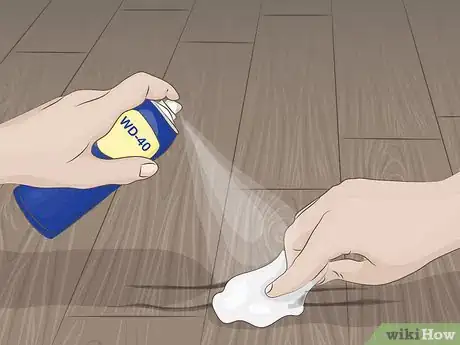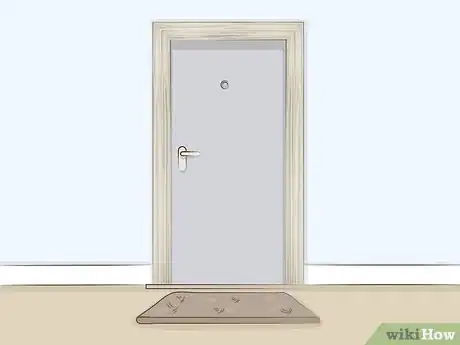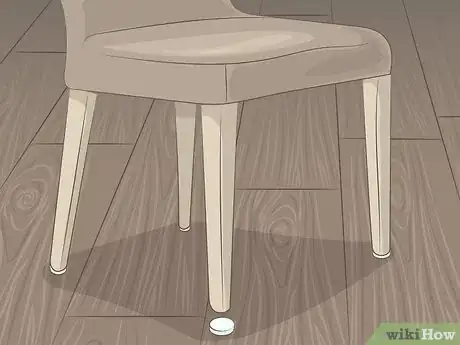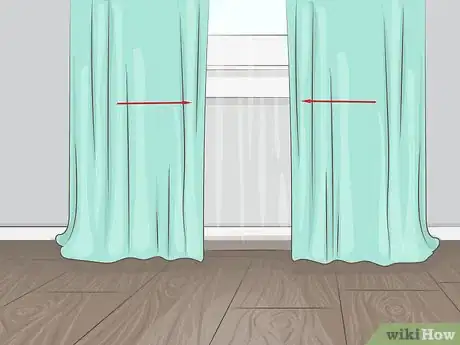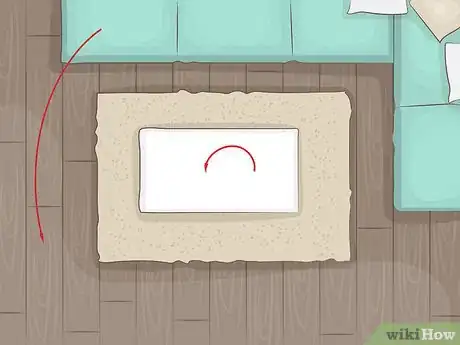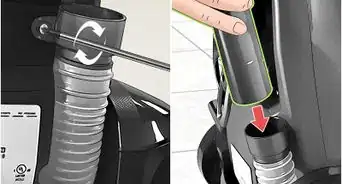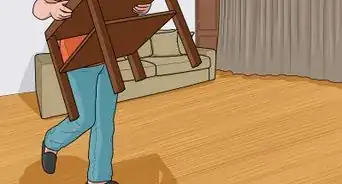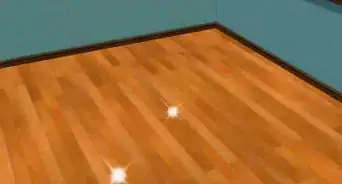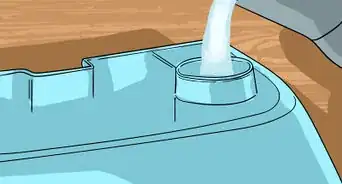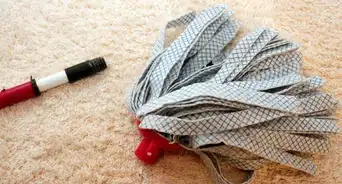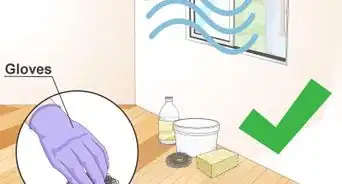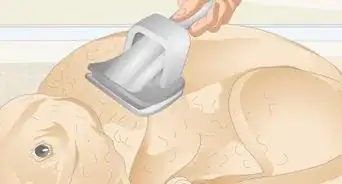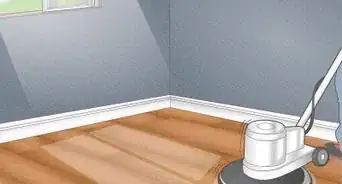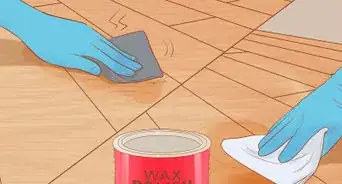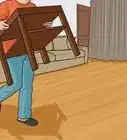This article was co-authored by Sam Adams and by wikiHow staff writer, Sophia Latorre. Sam Adams is the owner of Cherry Design + Build, a residential design and construction firm, which has been operating in the Greater Seattle Area for over 13 years. A former architect, Sam is now a full-service contractor, specializing in residential remodels and additions.
wikiHow marks an article as reader-approved once it receives enough positive feedback. In this case, 100% of readers who voted found the article helpful, earning it our reader-approved status.
This article has been viewed 30,838 times.
Laminate flooring is beautiful and easy to take care of. Caring for your floors may seem daunting at first, but once you figure out the right techniques and materials, it’s simple! Protect your floors by cleaning them routinely, removing stains immediately, and using furniture pads to keep your laminate floors in pristine condition.
Steps
Doing Routine Cleaning
-
1Clean your floors with a dry microfiber mop to remove debris. A microfiber mop is ideal for cleaning laminate floors because it easily picks up dirt, crumbs, and pet hair. Whenever you notice that your floor looks dirty or dusty, run a dry microfiber mop over it to clear away the debris.[1]
- If you don’t have a microfiber mop, you can also use terry cloth or cotton.
-
2Vacuum with a soft flooring attachment as an alternative to dry mopping. Regular vacuuming is important in order to remove dirt, dust, and debris from the floor. When vacuuming, use a soft flooring attachment in order to be as gentle on the floor as possible. Be sure to use a hardwood setting on your vacuum as well.[2]Advertisement
-
3Use baby shampoo and water to wash laminate floors. Many commercial cleaners can leave laminate floors looking dull and streaky. Baby shampoo, however, is gentle and safe to use. Mix 1 tablespoon (15 ml) of baby shampoo with 1 gallon (3.8 l) of water. Dip a microfiber mop in the solution, wring out the excess water, then use it to scrub the floors. When you’re done, go over your floor with a dry cloth.
- Excessive moisture can warp the laminate, so don’t skip the drying step!
-
4Mop your floors with vinegar and hot water once a month to add shine. Use 1 cup (240 ml) of vinegar per 1 gallon (3.8 l) of water. Dip your microfiber mop in the vinegar and water mixture, then move it back and forth across your floors.
- Only use this method once a month or less to prevent damage to the protective seal on the laminate.
Removing Stains and Scuff Marks
-
1Remove stubborn stains with nail polish remover or rubbing alcohol. It is important to clean up stains as soon as possible so they don’t set in. Stubborn stains, such as paint, oil, tar, and marker, can be removed with an acetone-based nail polish remover. You can also use rubbing alcohol to remove these types of stains.[3]
- Just pour a small amount of nail polish remover or rubbing alcohol on a soft cloth and use it to scrub the stain. Repeat if necessary.
-
2Use ice and a plastic scraper to remove substances stuck to the floor. You can harden substances such as wax or gum by applying ice to them. Then, use a credit card or plastic scraper to gently remove the substance. Avoid using a metal tool to scrape the floor, as it could scratch or damage it.[4]
-
3Get rid of rust stains with lemon and salt. Metal items can leave rust stains on your laminate floors. To remove them, sprinkle table salt (not coarse salt) over the area. Cut a lemon in half and rub 1 half over the salt. If the stain is especially stubborn, you can saturate the area in salt and lemon juice and let it sit overnight. Then, rub a new lemon half over the stain in the morning.[5]
- Use a damp cloth or paper towel to pick up the salt and remove any remaining lemon juice.
-
4Remove scuff marks with WD-40. If there are scuff marks from shoes covering your laminate floor, don’t fret! It’s super easy to remove them. Just spray a small amount of WD-40 onto the scuff mark, then wipe it away with a cloth or paper towel.[6]
- Clean the area with baby shampoo or a mixture of vinegar and water after removing the scuff mark so the spot isn’t slippery from the WD-40.
Protecting Laminate Floors
-
1Put mats outside your exterior entrances. Placing a floor mat outside the entrances will prevent dirt, snow, grit, and other debris from being tracked over your floors. It’s also a good idea to place mats in heavily trafficked areas of your home to prevent wear and tear.
- For example, you may want to place a mat in front your sink or stove.
-
2Use protective pads under heavy furniture. If heavy chairs or tables get moved around, your laminate floors can get scratched up. Put protective pads under heavy furniture and under furniture that is moved often—like dining room chairs.[7]
-
3Put up window coverings to protect your floors from direct sunlight. Excessive heat and sunlight can cause your floors to fade. Use window coverings, like blinds or curtains, to prevent direct sunlight from hitting your floors on a daily basis.[8]
-
4Rearrange your rugs and furniture to prevent discoloration. Keeping your rugs and furniture in the same location for several years at a time can cause your laminate floors to age unevenly, resulting in patchy spots. Try to rearrange your rugs and furniture once a year to prevent discoloration.[9]
Expert Q&A
-
QuestionWhat can you put on laminate floors to protect them?
 Sam AdamsSam Adams is the owner of Cherry Design + Build, a residential design and construction firm, which has been operating in the Greater Seattle Area for over 13 years. A former architect, Sam is now a full-service contractor, specializing in residential remodels and additions.
Sam AdamsSam Adams is the owner of Cherry Design + Build, a residential design and construction firm, which has been operating in the Greater Seattle Area for over 13 years. A former architect, Sam is now a full-service contractor, specializing in residential remodels and additions.
Professional Contractor Use a protective rug or mat in all high traffic spots. Laminate flooring is highly durable, but there's no chemical or product you can buy to seal or protect it. So, if you have a high traffic area, put down a runner rug. You want to make sure that grit and dirt aren't ground into the flooring.
Use a protective rug or mat in all high traffic spots. Laminate flooring is highly durable, but there's no chemical or product you can buy to seal or protect it. So, if you have a high traffic area, put down a runner rug. You want to make sure that grit and dirt aren't ground into the flooring.
Warnings
- Check the manufacturer’s instructions before cleaning your floors. Using the wrong products could void your warranty.⧼thumbs_response⧽
- Do not sand, refinish, or lacquer laminate floors.[11]⧼thumbs_response⧽
Things You’ll Need
Doing Routine Cleaning
- Microfiber mop
- Baby shampoo
- Vacuum with a soft flooring attachment
- Vinegar
- Water
Removing Stains and Scuff Marks
- Acetone-based nail polish remover
- Rubbing alcohol
- Ice
- Plastic scraper
- Table salt
- Lemons
- Cutting board
- Knife
- WD-40
- Cloths or paper towels
Protecting Laminate Floors
- Floor mats
- Protective pads
- Window coverings
References
- ↑ http://laminatefloorblog.com/how-to-clean-laminate-floors/
- ↑ https://www.builddirect.com/learning-center/flooring/how-care-for-laminate-floors/
- ↑ https://www.mohawkflooring.com/flooring/laminate/guides/laminate-care-maintenance
- ↑ https://www.mohawkflooring.com/flooring/laminate/guides/laminate-care-maintenance
- ↑ https://www.professorshouse.com/how-to-remove-rust-stains-from-laminated-wood-flooring/
- ↑ https://www.bestlaminate.com/blog/how-to-remove-scuff-marks-from-laminate-flooring/
- ↑ https://www.mohawkflooring.com/flooring/laminate/guides/laminate-care-maintenance
- ↑ https://www.mohawkflooring.com/flooring/laminate/guides/laminate-care-maintenance
- ↑ https://www.mohawkflooring.com/flooring/laminate/guides/laminate-care-maintenance
